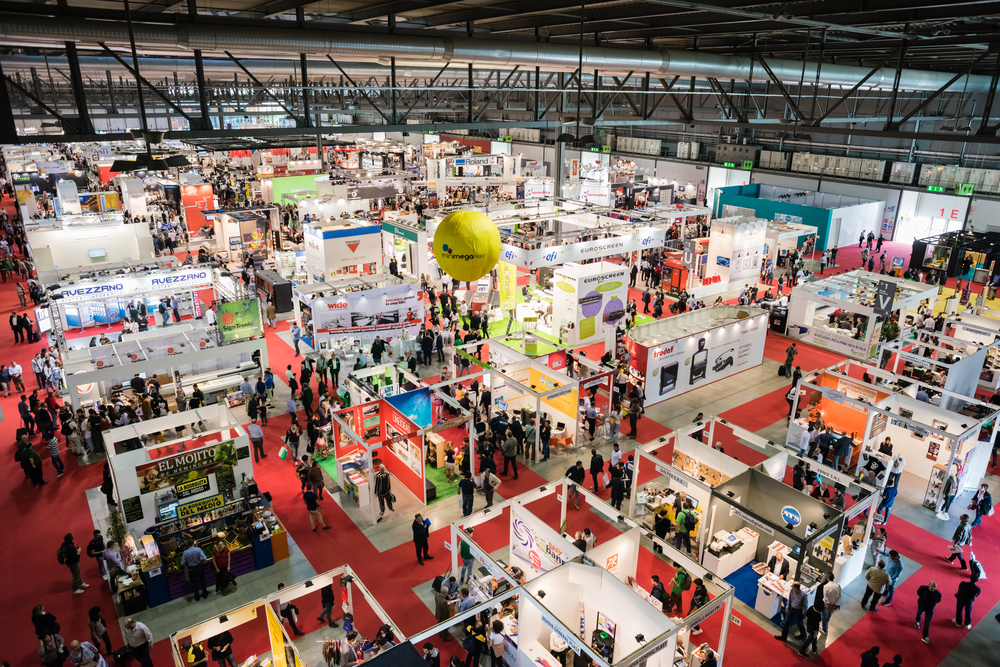Wondering how to make the most out of trade shows in the convenience distribution industry? Dive into our guide to discover strategies and tips for maximizing your presence and turning interactions into business growth.
Every industry professional knows the buzz and energy of distribution trade shows. The hum of conversation, the exchange of business cards, the unveiling of new products, and the anticipation of potential deals. These events are the lifeblood of the convenience store distribution industry. But beyond the glitz and glamour, there’s a strategic game at play. How do you stand out in a sea of competitors? How do you forge meaningful connections that last beyond the event? And most importantly, how do you translate those interactions into tangible business growth?
In this article, we’ll pull back the curtain on the world of distribution trade shows and offer valuable insights and strategies that will empower you to maximize your industry event experience, from booth setup to post-show follow-ups. So, whether you’re a trade show veteran or you’re gearing up for your first event, read on to gain actionable tips and techniques that can elevate your trade show game.
Understanding the Importance of Trade Shows in the Distribution Industry
For convenience store suppliers, trade shows have long been recognized as a cornerstone of the distribution industry. They offer a unique platform where businesses can showcase a wide variety of their products, innovations, and services to a targeted audience. But the significance of these events goes far beyond mere product displays.
1. Networking Opportunities:
One of the primary benefits of attending trade shows is the unparalleled networking opportunities they present. Distributors, retailers, manufacturers, and other industry stakeholders converge at these events. This congregation facilitates the exchange of ideas, the formation of new partnerships, and the strengthening of existing business relationships. For many, the connections made at trade events lead to long-term collaborations and business ventures.
2. Market Insights:
Trade shows are a goldmine of information. By observing trends in the tobacco, candy, and food service distribution industries, listening to keynote speakers, and engaging in panel discussions, attendees can gain a deeper understanding of market dynamics, emerging technologies, and shifts in consumer preferences. This knowledge is invaluable for distributors looking to stay ahead of the curve and adapt to an ever-evolving market landscape.
3. Brand Visibility:
For convenience store wholesalers and distributors, especially those introducing new products or entering new markets, trade events offer a platform to enhance brand visibility. A well-designed booth, engaging product demos, and interactive sessions can leave a lasting impression on attendees, making your brand memorable in a crowded marketplace.
4. Direct Feedback:
Trade shows and conventions allow distributors to showcase their products to convenience store owners and other potential customers, receiving immediate reactions. This feedback can be instrumental in refining product offerings, adjusting marketing strategies, or identifying areas of improvement.
5. Competitive Analysis:
Last but not least, industry trade shows provide a unique vantage point to observe competitors. By analyzing competitors’ booth designs, product offerings, and engagement strategies, distributors can glean insights into what’s working in the industry and where there might be gaps to exploit.
In essence, trade shows are not just events; they’re experiences. They offer a holistic view of the industry, from the latest innovations to the shifting dynamics of the market. For convenience store distributors, understanding and leveraging the power of these events can be the key to unlocking new growth avenues and solidifying their position in the market.
Related: Why Attend Convenience Trade Shows? Strategies for Growth and Innovation

Maximizing Your Presence: Before, During, and After the Trade Show
We all know that industry events can be overwhelming, with hundreds of booths, thousands of attendees, and a plethora of activities. To truly stand out and make the most of the opportunity, it’s essential to have a well-thought-out strategy for before, during, and after the event.
Before the Trade Show:
- Research and Planning: Start by researching the event’s attendees, exhibitors, and agenda. Identify key players you want to connect with and sessions you don’t want to miss. This will help you prioritize your time and efforts.
- Engaging Booth Design: Your booth is your brand’s physical representation at the show. Invest in an engaging and interactive booth design that not only showcases your products but also attracts and retains visitors.
- Promote Your Presence: Use social media, email campaigns, and industry publications to announce your participation. Offer sneak peeks of what attendees can expect at your booth, be it product launches, demos, or special offers.
During the Trade Show:
- Active Engagement: Don’t just wait for attendees to come to you. Engage them with live demonstrations, interactive sessions, and knowledgeable staff who can answer questions and provide insights.
- Collect Data: Use this opportunity to gather data. Whether it’s scanning badges, collecting business cards, or using digital platforms, ensure you have a system in place to capture leads.
- Stay Updated: Attend keynotes, panel discussions, and workshops. This will not only provide you with industry insights but also opportunities to network with peers and potential clients.
After the Trade Show:
- Follow-Up: The days following the event are crucial. Reach out to the leads you’ve collected, thank them for visiting your booth, and provide additional information or set up further meetings.
- Analyze and Reflect: Review the data you’ve collected. Analyze the success of your booth, the quality of leads, and the feedback received. This will help you refine your strategy for future trade shows.
- Stay Connected: Industry gatherings are just the beginning. Use the connections you’ve made to foster long-term relationships. Engage with them on social media, share industry news, and keep them updated on your latest offerings.
In conclusion, a trade show is more than just a one-time event. It’s an ongoing process of engagement, networking, and growth. With the right strategy and approach, convenience store distributors can maximize their presence and turn convention opportunities into tangible business outcomes.
Leveraging Technology to Enhance Your Trade Show Experience
In the modern age, technology has revolutionized the way we approach trade shows and events. From digital booth displays to data analytics, technology offers tools that can significantly elevate the trade show experience for both exhibitors and attendees.
- Digital Booth Displays: Gone are the days of static banners and posters. Today, digital displays allow for dynamic presentations of convenience store products, interactive demos, and engaging visuals that captivate attendees. These displays can be easily updated, ensuring that you’re always showcasing your latest offerings.
- Mobile Apps for Trade Shows: Many conventions now offer dedicated mobile apps that provide attendees with event schedules, maps, and exhibitor lists. As an exhibitor, ensure you have a prominent presence on these apps. They can be a valuable tool for driving traffic to your booth and engaging with attendees in real-time.
- Virtual Reality (VR) and Augmented Reality (AR): These technologies can provide immersive product demos or virtual tours of your facilities. For convenience store distributors, this could mean allowing attendees to virtually walk through a store setup or experience a new product in a simulated environment.
- Data Analytics: With the right technology, you can gather valuable data from your booth visitors. This can include demographics, dwell time, and specific areas of interest. Analyzing this data post-event can provide insights into attendee behavior and preferences, helping you refine your future trade show strategies.
- Social Media Integration: Use social media platforms to engage with attendees before, during, and after the event. Live-tweeting, streaming sessions, or creating event-specific hashtags can generate buzz and increase your booth’s visibility.
- Lead Capture Solutions: Traditional methods like collecting business cards can be cumbersome. Modern lead capture solutions, often integrated into trade show apps or standalone devices, allow for quick and efficient data collection, ensuring you don’t miss out on potential business opportunities.
- DAC Trade Show Manager: One of the standout tools designed specifically for the convenience store distribution industry is the DAC Trade Show Manager. This browser-based module allows distributors to manage trade show activities seamlessly, from booth setup to capturing attendee information.
Incorporating technology into your industry event strategy not only enhances the attendee experience but also provides valuable data and insights for your business.
See the DAC Trade Show Manager in action: Click to view a walkthrough of the software.
The DAC Trade Show Manager: Revolutionizing Trade Show Management
As we’ve mentioned, trade shows are a whirlwind of activities in the wholesale distribution sector, from setting up booths to managing interactions and capturing leads. In such a dynamic environment, having a tool that’s tailored to the unique needs of the convenience store distribution industry can be a game-changer. Enter the DAC Trade Show Manager.
- Streamlined Booth Management: No more chaotic booth setups and disorganized displays. With the DAC Trade Show Manager, distributors can easily manage booth activity, ensuring that every product and promotional material is displayed optimally. This not only enhances the visual appeal but also ensures that attendees can access information effortlessly.
- Capture and Organize Leads: The success of an event isn’t just about the number of attendees but about the quality of interactions. The Trade Show Manager allows distributors to quickly capture attendee information, ensuring that no potential lead slips through the cracks. Post-event follow-ups become a breeze with organized and accessible data.
- Real-time Recap Reports: Stay informed about your booth’s performance with real-time recap reports. Understand which products garnered the most attention, which promotional materials were most effective, and gain insights into attendee preferences. These reports can be shared with customers and vendors via email, facilitating transparent communication.
- Seamless Integration with DAC Prebook Order System: One of the standout features of the DAC Trade Show Manager is its ability to integrate seamlessly with the DAC Prebook Order system. This means that bookings captured during the trade show can be easily exported, streamlining the order management process.
- Event Planning Made Easy: Organizing a convention appearance involves countless moving parts. From managing vendor participation to coordinating with event venues, the DAC Trade Show Manager simplifies the planning process. Capture attendee information in advance, plan booth layouts, and ensure that every aspect of the event runs smoothly.
In the competitive landscape of convenience store distribution, having a specialized tool like the DAC Trade Show Manager can set you apart. It’s not just about attending an industry show; it’s about maximizing every opportunity, capturing every lead, and ensuring that your brand stands out.

Navigating Post-Show Activities: Turning Leads into Conversions
The convention may be over, but the real work has just begun. Post-show activities are crucial in ensuring that the connections made and leads gathered during the event translate into tangible business opportunities. Here’s how to navigate the post-show landscape effectively:
Organized Follow-Ups:
Timing is everything when it comes to following up with leads. An immediate thank-you email expressing gratitude for their visit to your booth, coupled with a promise of further communication, keeps the interaction fresh in their minds. Utilize the data captured during the event to personalize your communication and demonstrate genuine interest.
Analyze Data and Feedback:
Dive deep into the data collected during the trade show. Analyze which products were most inquired about, which promotional materials were most effective, and gather feedback from attendees. This data is invaluable in refining your approach for future events and understanding market trends.
Engage on Social Media:
Leverage your social media platforms to continue the conversation. Share highlights from the trade show, tag businesses and attendees where possible, and utilize the event’s official hashtag. Engaging posts about the event keep the momentum going and provide additional touchpoints for interaction.
Evaluate ROI:
Assess the return on investment (ROI) of the trade show by comparing the costs involved (booth setup, promotional materials, staff time, etc.) against the business generated from leads captured during the event. This evaluation is crucial in determining the success of the event and planning for future participation.
Internal Debrief:
Conduct a thorough debrief with your team. Discuss what worked well, what could be improved, and strategize on how to enhance performance at future events. An internal analysis is key to continuous improvement and ensuring that learnings are implemented in subsequent events.
Strategize for Conversion:
Develop a strategy to convert leads into customers. This might involve special follow-up offers, personalized demos, or exclusive insights into upcoming products. Tailor your approach based on the interactions during the industry event to ensure relevancy and appeal.
Plan for the Next Show:
While the learnings are fresh, begin planning for the next trade show. Implement the insights gained, refine your strategy, and ensure that every trade show is a step forward in enhancing your brand presence and customer base in the convenience store distribution industry.
Post-show activities are pivotal in ensuring that the effort and resources invested in the show translate into business growth. It’s about nurturing the connections made, analyzing the data collected, and strategically moving forward to convert leads into loyal customers.
Conclusion: Making the Most of Distribution Trade Shows
Trade shows are more than just events; they’re opportunities. Opportunities to showcase your brand, to connect with potential clients, and to stay updated with industry trends. But to truly harness the potential of these events, a strategic approach is essential. From meticulous planning to leveraging the power of technology, every detail matters.
For convenience store distributors, the stakes are even higher. The industry is competitive, and the margins can be thin. But with the right strategies in place, trade shows can be transformed into goldmines of opportunities. Remember, it’s not just about the days of the event; it’s about the relationships you build, the insights you gain, and the growth you achieve in the days, weeks, and months that follow.
As you gear up for your next industry event, keep these insights in mind. Embrace technology, prioritize engagement, and always be ready to adapt and learn. The world of distribution trade shows is dynamic, but with the right approach, you can ensure that you’re always one step ahead.
Ready to elevate your trade show game? Explore how DAC and our Trade Show Manager Module can transform your trade show experience. Learn more about DAC and our Trade Show Manager Module here.


